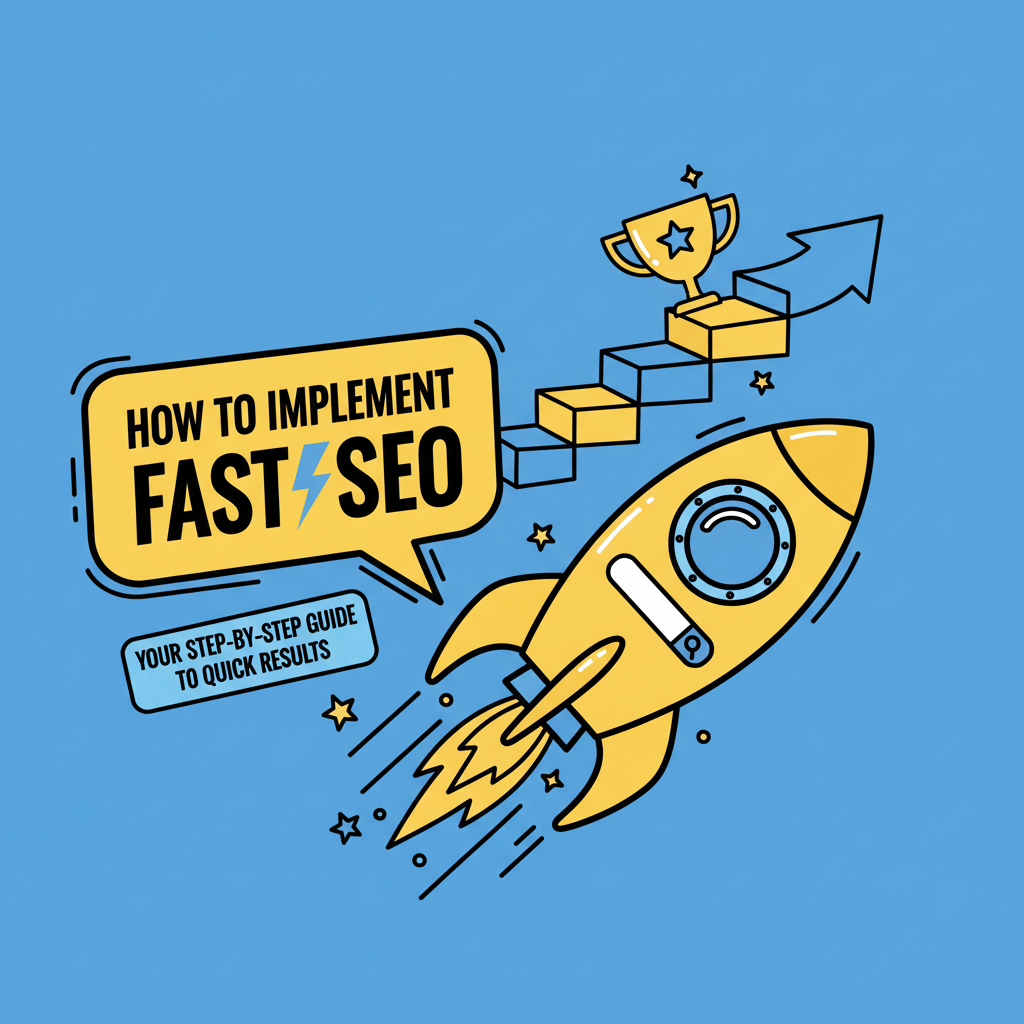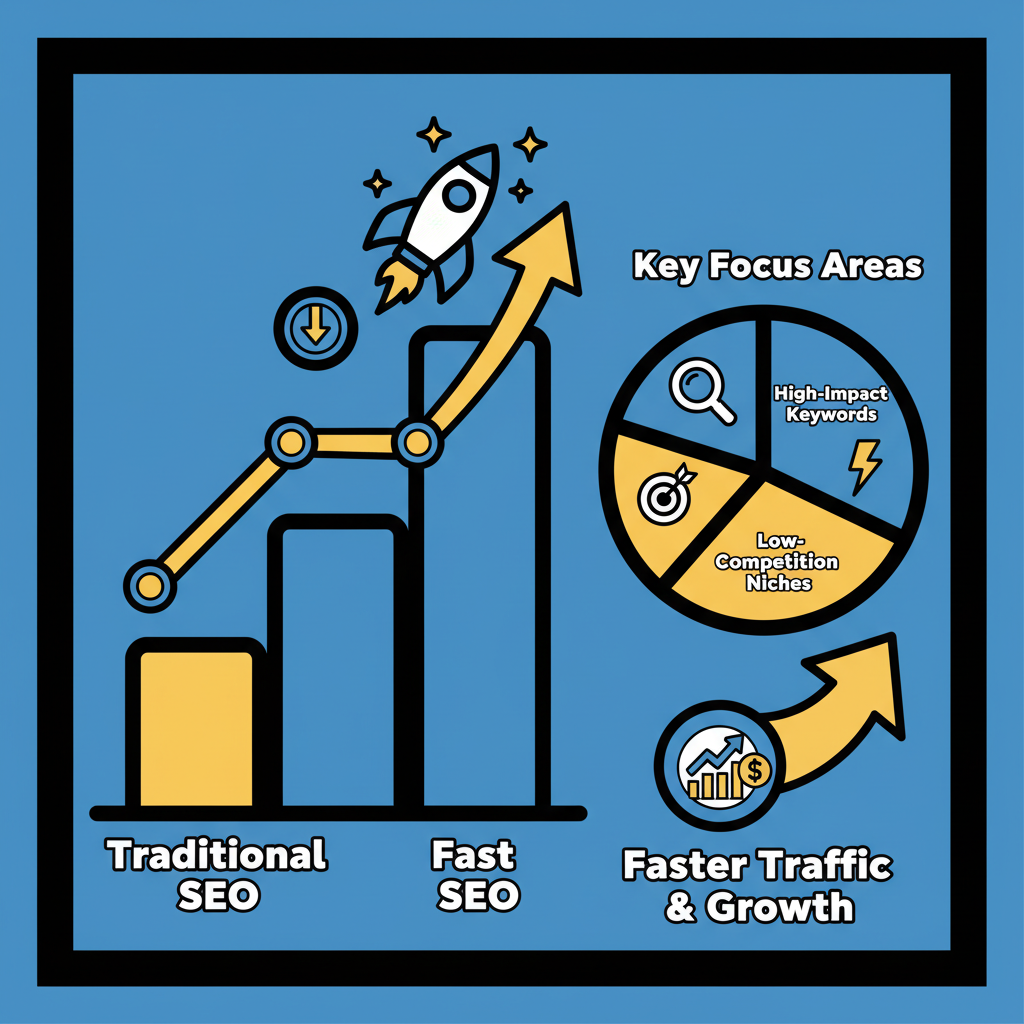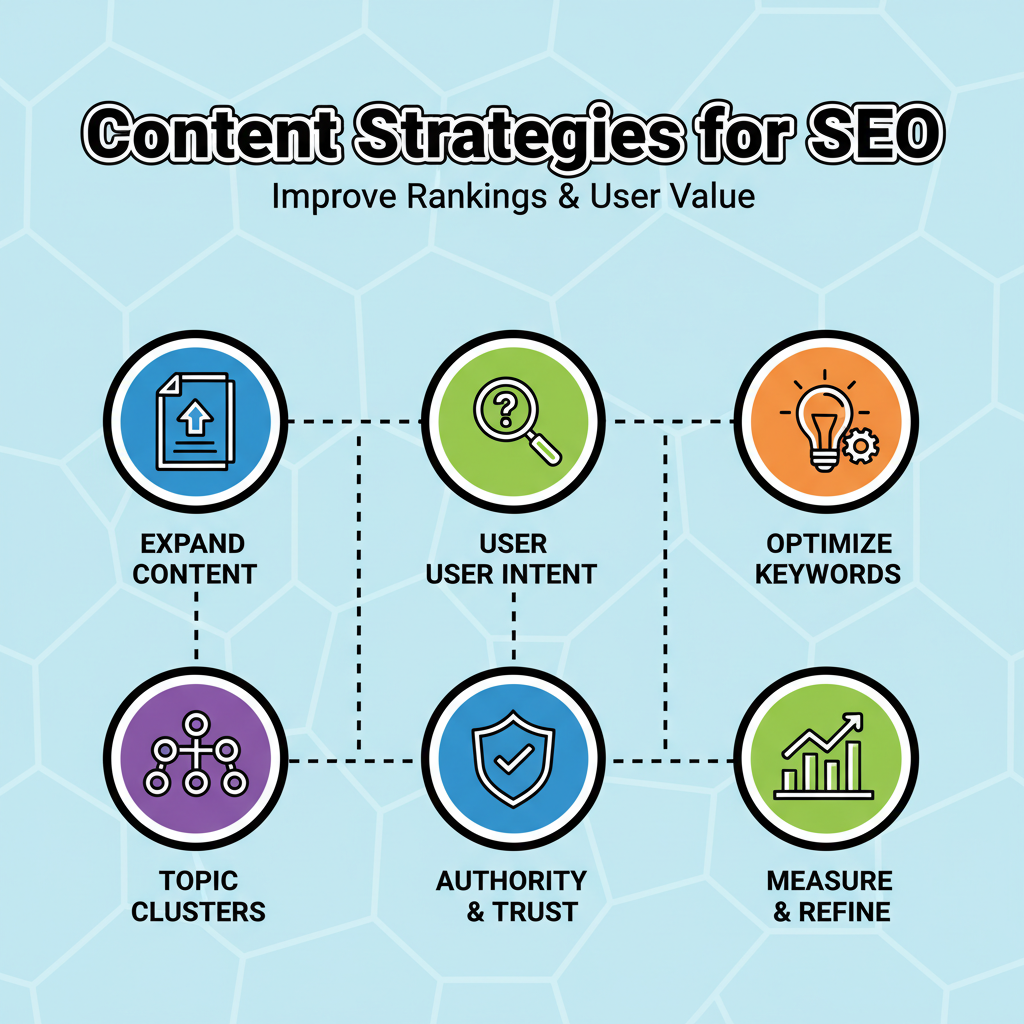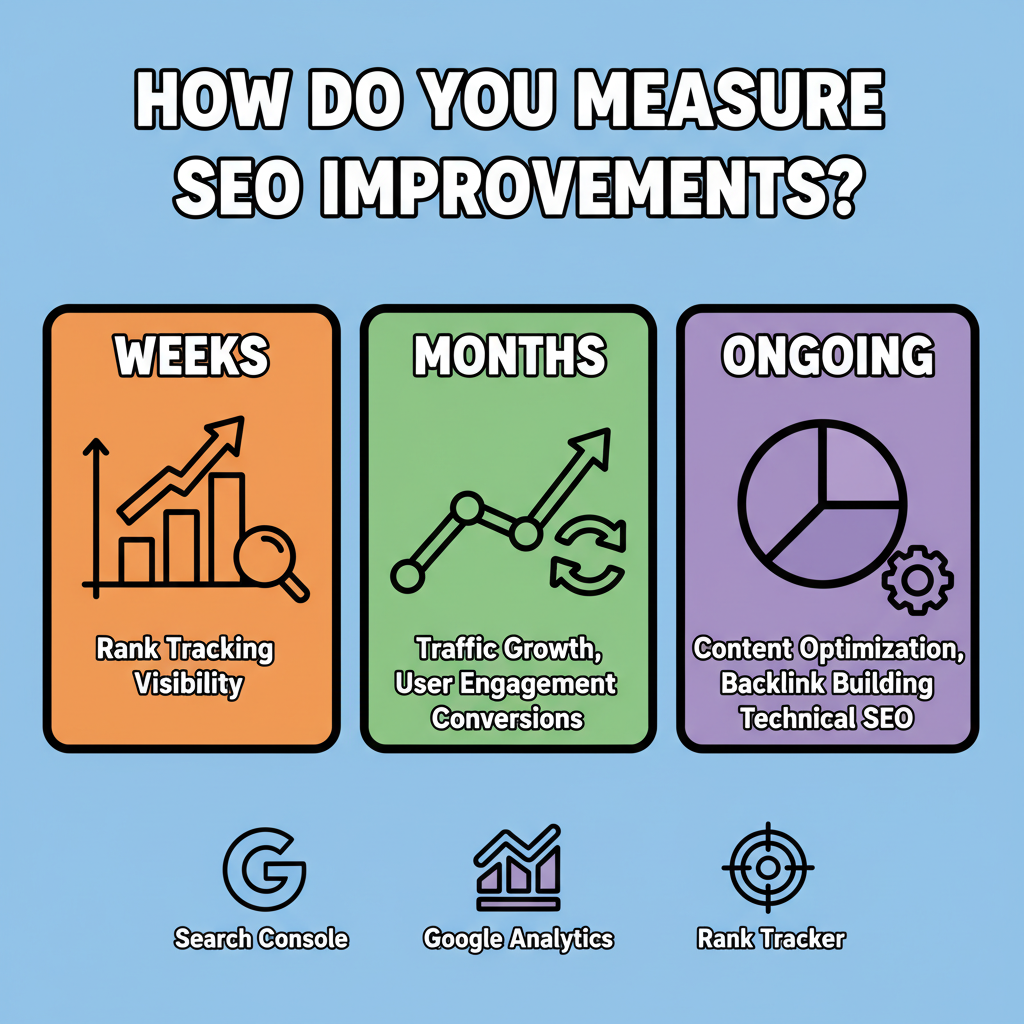What Does It Actually Mean to Improve SEO in Practice?
Posted by
How to Improve SEO Performance: A Complete Step-by-Step Strategy Guide

Search engine optimization can feel overwhelming when you're staring at declining rankings and wondering where to start. The good news is that improving your SEO doesn't require a complete website overhaul or months of complex technical work. With the right systematic approach, you can implement proven strategies that deliver measurable results.
This comprehensive guide walks you through the exact steps needed to improve SEO performance across every critical aspect of your website. From technical foundations to content optimization, you'll discover actionable tactics that search engines reward and users appreciate.
What Does It Actually Mean to Improve SEO in Practice?

When we talk about improving SEO, we're addressing multiple interconnected systems that influence how search engines discover, understand, and rank your content. Unlike basic optimization, true SEO improvement involves creating sustainable processes that compound over time.
The most effective approach focuses on three core pillars: technical performance, content relevance, and user experience signals. Each pillar supports the others, creating a foundation that withstands algorithm updates while consistently attracting qualified organic traffic.
Understanding this holistic view helps you prioritize efforts that deliver the greatest impact. Rather than chasing individual ranking factors, you'll build systems that improve SEO across multiple dimensions simultaneously.
How Do You Conduct a Complete SEO Performance Audit?
Before implementing improvements, you need a clear picture of your current SEO health. A comprehensive audit reveals specific opportunities and prevents wasted effort on areas that already perform well.
Start by analyzing your website's technical infrastructure using tools like Google Search Console and PageSpeed Insights. Look for crawl errors, mobile usability issues, and page loading speeds that exceed three seconds. According to Google's Core Web Vitals research, sites with poor loading performance see significantly higher bounce rates and lower conversion rates.
Next, evaluate your content performance by identifying pages that rank on the second or third search results pages. These represent your biggest opportunities since small improvements can move them into high-traffic positions. Export your Search Console data to find queries where you rank between positions 11-30, then analyze what additional content or optimization these pages need.
| Audit Category | Key Metrics to Check | Tools to Use |
|---|---|---|
| Technical Health | Crawl errors, page speed, mobile usability | Google Search Console, PageSpeed Insights |
| Content Performance | Rankings 11-30, click-through rates, impressions | Search Console, analytics platform |
| Competitor Analysis | Content gaps, keyword opportunities | SEMrush, Ahrefs, or similar tools |
| User Experience | Bounce rate, time on page, conversion paths | Google Analytics, heatmap tools |
What Technical Improvements Deliver the Fastest SEO Results?
Technical SEO improvements often provide the quickest wins because they remove barriers that prevent search engines from properly accessing and understanding your content. Focus on these high-impact areas first.
Page speed optimization tops the priority list since it affects both user experience and search rankings. Compress images using modern formats like WebP, minimize CSS and JavaScript files, and implement browser caching. These changes can improve loading times by 40-60% within days of implementation.
Fix crawl errors and broken internal links next, as these directly impact how search engines navigate your site. Use Google Search Console to identify 404 errors, then either redirect these URLs to relevant pages or restore the missing content. Internal linking improvements help distribute page authority throughout your site while making it easier for users to find related information.
How Can You Optimize Your Site's Mobile Performance?
Mobile optimization goes beyond responsive design to include touch-friendly navigation, readable font sizes, and fast-loading mobile pages. Google's mobile-first indexing means your mobile version determines your search rankings, making this optimization critical for SEO success.
Test your mobile experience using Google's Mobile-Friendly Test tool, then address issues like small clickable elements, horizontal scrolling, and slow-loading resources. Pay special attention to above-the-fold content, ensuring it loads quickly and provides immediate value to mobile users.
What Content Strategies Actually Improve SEO Rankings?

Content optimization for SEO requires balancing search engine requirements with genuine user value. The most effective approach involves creating comprehensive resources that thoroughly address user search intent while naturally incorporating relevant keywords.
Focus on expanding existing content rather than constantly creating new pages. Take articles that already rank in positions 5-15 and add depth through additional sections, updated statistics, and more detailed explanations. This approach leverages existing page authority while providing the comprehensive coverage that search engines favor.
Implement topic clustering by creating pillar pages that cover broad subjects, then linking to detailed subtopic pages. This structure helps search engines understand your content relationships while keeping users engaged with related information. For example, if you're working on creating high-quality blog content, ensure each post connects to related topics through strategic internal linking.
How Do You Optimize Content for Search Intent?
Search intent optimization requires understanding what users actually want to accomplish when they enter specific queries. Analyze the current top-ranking pages for your target keywords to identify patterns in content format, depth, and structure.
For informational queries, provide comprehensive guides with clear headings, bullet points, and actionable takeaways. Commercial intent keywords require content that addresses comparison factors, pricing considerations, and specific use cases. Transactional searches need streamlined paths to conversion with minimal friction.
What Role Does User Experience Play in SEO Improvement?
User experience signals increasingly influence search rankings as search engines prioritize content that genuinely satisfies user needs. Core Web Vitals, bounce rates, and time on page all contribute to how search engines evaluate your content quality.
Improve user engagement by structuring content with clear headings, short paragraphs, and visual elements that break up text blocks. Add relevant images, charts, or videos that support your written content while making pages more visually appealing.
Navigation improvements can significantly impact both user experience and SEO performance. Ensure your main navigation includes your most important pages, use descriptive menu labels, and implement breadcrumb navigation to help users understand their location within your site structure.
How Do You Build Authority Through Strategic Link Building?
Link building for SEO improvement focuses on earning high-quality backlinks from relevant, authoritative sources rather than pursuing quantity alone. The most sustainable approach involves creating content that naturally attracts links while building relationships within your industry.
Develop linkable assets like original research, comprehensive guides, or useful tools that provide unique value to your target audience. Reach out to industry publications, bloggers, and websites that have linked to similar content, explaining how your resource would benefit their readers.
Guest posting remains effective when done strategically. Target publications that serve your audience and offer genuinely valuable content rather than purely promotional pieces. Focus on building relationships with editors and contributing consistently rather than one-off submissions.
What Internal Linking Strategies Support SEO Improvement?
Internal linking distributes page authority throughout your site while helping users discover related content. Create a logical linking structure that connects related topics and guides users through your content funnel.
Link from high-authority pages to newer content that needs ranking support, using descriptive anchor text that indicates what users will find on the linked page. For instance, when discussing sustainable organic traffic growth, connect to related topics that provide additional context or deeper information.
How Do You Measure and Track SEO Improvements?

Tracking SEO improvements requires monitoring multiple metrics that indicate progress across different timeframes. Some changes show results within weeks, while others take months to fully materialize.
Set up comprehensive tracking using Google Search Console, Google Analytics, and rank tracking tools to monitor keyword positions, organic traffic, and user engagement metrics. Create monthly reports that track progress against specific goals rather than vanity metrics that don't correlate with business results.
Focus on metrics that directly relate to your SEO improvement efforts: organic traffic growth, keyword ranking improvements, click-through rate increases, and conversion rate optimization. According to research from BrightEdge, organic search drives over 50% of website traffic, making these metrics crucial for overall business success.
What Common SEO Improvement Mistakes Should You Avoid?
The biggest SEO improvement mistake involves focusing on quick fixes rather than sustainable, long-term strategies. Avoid keyword stuffing, buying low-quality backlinks, or making dramatic changes without proper testing and measurement.
Don't neglect the relationship between organic SEO fundamentals and user experience. Search engines increasingly reward sites that provide genuine value to users, making it essential to balance optimization with usability.
Another common error involves inconsistent effort. SEO improvement requires ongoing attention and regular updates rather than one-time optimizations. Develop systems and processes that ensure continuous improvement rather than sporadic bursts of activity.
Conclusion
Improving SEO performance requires a systematic approach that addresses technical foundations, content quality, and user experience simultaneously. By following the strategies outlined in this guide, you'll build sustainable organic growth that withstands algorithm changes while consistently attracting qualified traffic.
Remember that SEO improvement is an ongoing process rather than a one-time project. Start with technical optimizations for quick wins, then focus on content enhancement and link building for long-term growth. Monitor your progress regularly and adjust strategies based on performance data rather than assumptions.
Ready to implement these SEO improvements on your website? Fast SEO Fix provides automated solutions that streamline the optimization process, helping you achieve better rankings without the manual complexity. Start improving your SEO performance today with proven strategies that deliver measurable results.